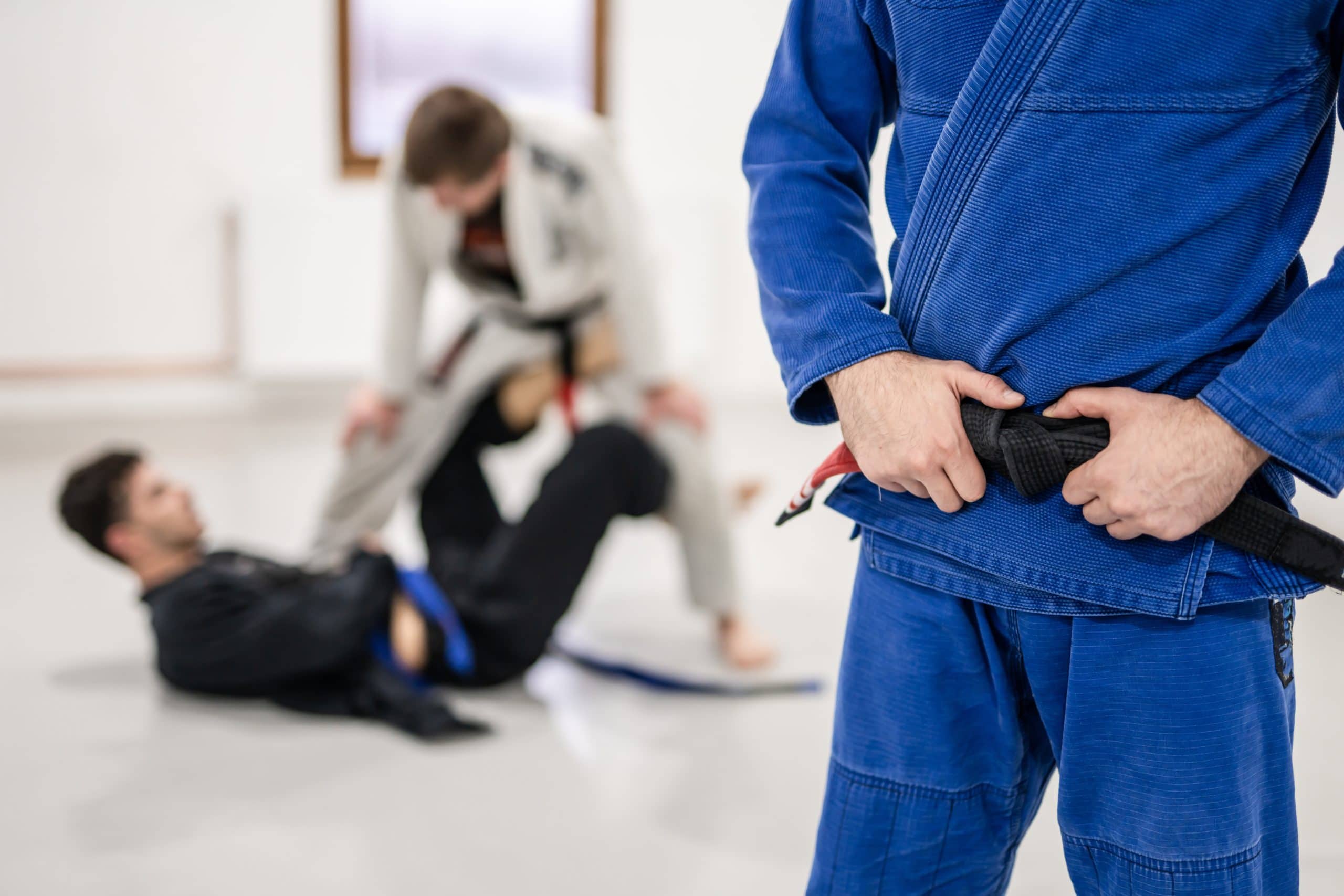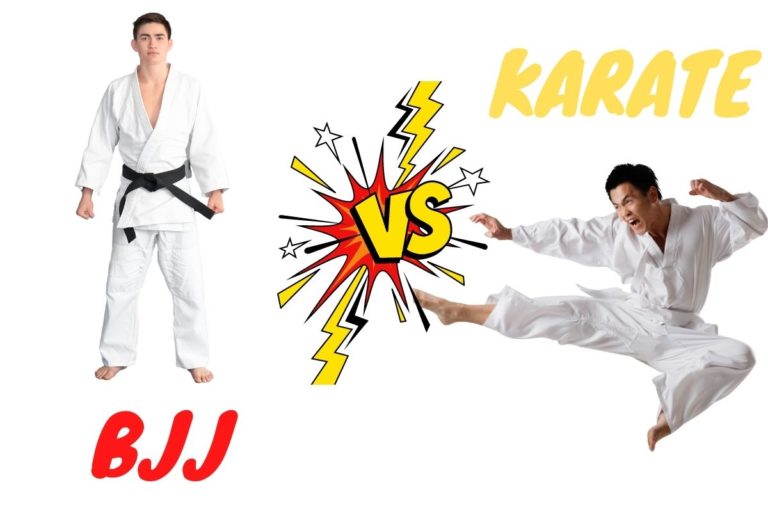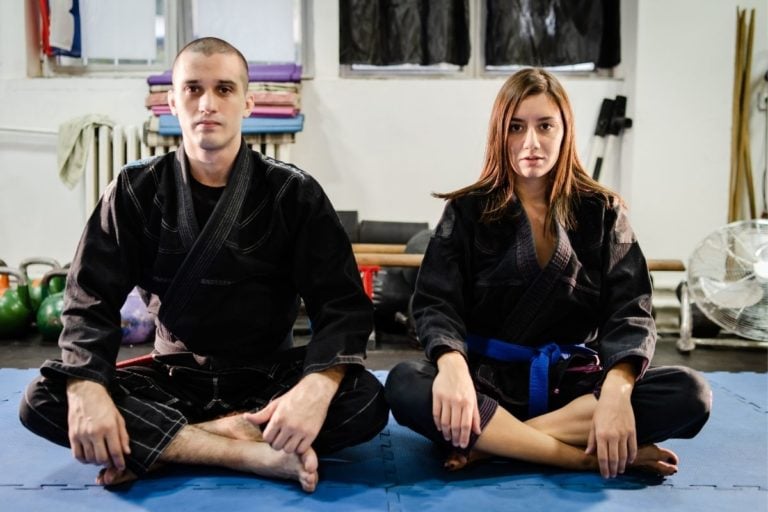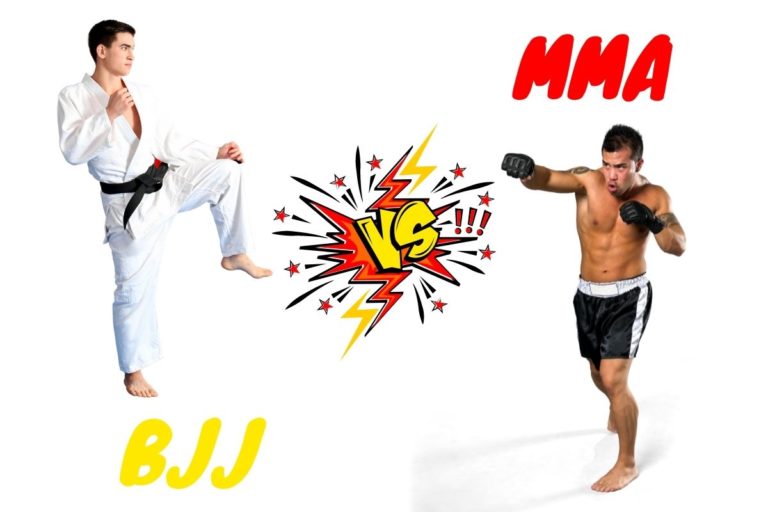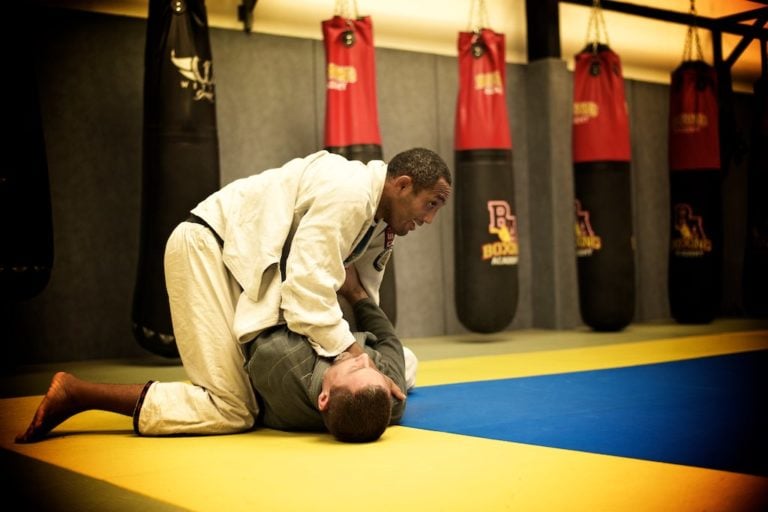What Do BJJ Gi Colors Mean?
In Brazilian jiu-jitsu (BJJ) you can wear a gi, but there is also no-gi. Traditionally, all gis were white in color but now many different colored gis are common at BJJ schools. But, does the color of a BJJ gi matter?
Overall, gi colors don’t have any specific meaning in BJJ. It’s a matter of personal preference what color gi a person wears. In the early days of BJJ, only white gis were worn, and it’s still mandatory in strict BJJ schools. However, many BJJ schools don’t have a requirement for the color of the gi.
There are a few reasons why a white gi is preferred in traditional BJJ schools. Below, I will explain what these are, and the advantages and disadvantages of a white gi over a gi of a different color. After that, I will explain when it’s OK to wear a different colored gi other than white.
Does Gi Color Matter BJJ
In BJJ, different belt colors mean different ranks and different levels of skill in BJJ. So, it’s reasonable to assume that a different color gi means something or has some significance. Here’s the rundown on whether the color of your gi matters in BJJ.
In general, gi color does matter in BJJ. In a traditional BJJ school run by the founders of BJJ – the Gracie family, only a white gi was permitted to be worn. But, in schools run by students of Gracie family members often they are more relaxed about the gi color, and any color can be worn.
There have been countless interviews and podcasts done by Gracie family members about the history of jiu-jitsu. As you may know, modern-day Brazilian jiu-jitsu was started by Carlos Gracie and Helio Gracie.
Two brothers from Brazil. It was taught to Carlos by Mitsuyo Maeda and professional fighter from Japan. Mitsuyo Maeda traveled to Brazil, and after becoming good friends with Carlos Gracie decided to teach the curriculum to them.
Why a white gi only at some BJJ and judo academies
This all occurred in about the 1920s. In the many interviews with Gracie family members, it’s recounted that only white gis were used in the early days. Also, gis were extremely thin, and could NOT be used to grip strongly like they can today. Later on, Helio Gracie was asked why he preferred a white gi and his response was that it makes the belt colors stand out more.
Others have said that it also makes it very difficult to hide if your gi is dirty. Which isn’t the case for a black gi. Which doesn’t show any grime, particularly on the inside of the collar and the inside of the sleeves. Cleanliness and good grooming were very important principles taught by Helio Gracie.
Here’s a video from Helio Gracie’s second-oldest son Helio Gracie where he talks about gi colors, and belt colors:
Now, wearing a white gi is mostly a sign of respect for Helio Gracie. And to keep the tradition. This is done more strictly in schools run by the sons of Helio Gracie. Whereas, in BJJ schools run by people who go their black belts from Gracie family members, this isn’t always a strict requirement.
Judo is the same martial art as jiu-jitsu and was codified by Jigoro Kano in Japan. It has the same roots as BJJ. Interestingly, Mitsuyo Maeda who taught Carlos and Helio Gracie the jiu-jitsu they turned into Brazilian jiu-jitsu was a student of Jigoro Kano.
Until 1997, only white gis were worn in judo (source). In 1997 the International Judo Federation began allowing blue gis in judo tournaments. It’s likely around this time that colored gis started to become a thing.
What Does a Black Gi Mean
Various colors are often used to signify different things and have different meanings in different cultures. A black gi is a stark contrast to the typical white gi. So, here’s what it means.
Overall, a black gi has no specific meaning. At some BJJ schools, everyone wears a black gi. Whereas, at others, it’s a personal preference for the person wearing it. In traditional BJJ, and at traditional BJJ schools a black gi is never worn. Instead, a white gi is mandatory.
Judo is very much related to BJJ. They share many of the same moves. The main difference is that in judo competition matches you can win by doing a perfect throw. Whereas, this is not possible in BJJ tournaments. In Judo, gis are also worn that are virtually identical to the BJJ gi.
In judo, mostly only white and blue gis are allowed. Very old-school traditional judokas (people that train judo), also aren’t in favor of blue gis. Nowadays they are more accepted and are commonly worn in the Olympics.
Can a White Belt Wear a Gray Gi
A white belt is the first belt in BJJ. Being a white belt is a bit daunting because it’s hard to know if you’re missing something important. So, here’s a summary of whether it’s OK for a white belt to wear a gray gi.
In general, a white belt can wear a gray gi. The color of the gi a person wears is not dependent on their belt color. Instead, the color of the gi is a personal preference. At many BJJ schools, any color gi is OK. Whereas, at traditional BJJ schools only a white gi can be worn.
There are now many different gi brands. Because of that, there are many different special offers on gis. If you train often you also need many gis because it takes time to wash and dry them.
Therefore, many people just go for a gi that’s a match of good quality and a good price. Often these are colors that aren’t as desirable such as black, or white. Gray is a very bland color but still looks very good. It also hides if a gi is stained more so than a white gi. These are the primary reasons a person gets a gray gi over a different gi color.

